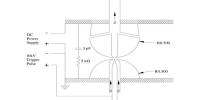Pneumatic artificial muscles (PAMs) have gained popularity as promising actuators for resembling human motion in a variety of fields, including robotics, rehabilitation, and prosthetics.
PAMs are mechanical devices that can resemble human muscles. They are typically made of rubber and coated in braided yarn. When given pressured air, they can stiffen and constrict, and when the air is released, they can relax and extend. It is crucial to have control systems that can manage the performance of PAM because it is a nonlinear system and experiences significant latency.
Although developing a nonlinear mathematical model for PAM is difficult, numerous control strategies have been suggested by researchers in the past to address PAM-related issues. While these conventional control strategies operate admirably, they are unable to handle the nonlinearity and hysteresis of PAM.
Furthermore, while the performance of PAM-based systems can be theoretically improved by learning control algorithms, doing so in practice is rather challenging.
To overcome these limitations and address this open problem, a group of researchers led by Associate Professor Ngoc-Tam BUI of the Innovative Global Program, College of Engineering, Shibaura Institute of Technology in Japan, along with Dr. Quy-Thinh Dao of Hanoi University of Science and Technology, has proposed a novel solution.
In their study published in the journal Scientific Reports on 22nd May 2023, they propose a control approach called “adaptive fuzzy sliding mode controller (or AFSMC)” that uses fuzzy logic (a type of computational thinking) for estimating control parameters of PAM-based systems.
In a comparative evaluation against the well-known commercial rehabilitation system, LOKOMAT, the AFSMC controller delivered similar performance. It also exhibited superior adaptability to sudden load changes, swiftly returning to the desired trajectory by manipulating its control output.
Professor Ngoc-Tam BUI
“The proposed innovative control strategy leverages the Takagi-Sugeno fuzzy algorithm to estimate the disturbance component and automatically update the output variable values, demonstrating enhanced tracking accuracy and adaptability compared to traditional sliding mode control methods,” explains Associate Professor BUI.
To estimate the disturbances and enhance the control performance, the researchers first created a sliding mode controller with a control signal that comprises a unique variable.
Next, they designed an adaptive fuzzy algorithm, wherein an adaptive law, to compute the disturbance variable, automatically updates parameter vectors of the component rules.
The stability of the developed ASFMC algorithm was then analyzed using the Lyapunov stability condition (used to study the stability of a nonlinear system). In addition, the researchers performed a number of tests to evaluate the effectiveness of their controller in comparison to conventional sliding mode control techniques.
Remarkably, the AFSMC approach exhibited improved tracking accuracy, with a root mean square error value of 2.68° at a frequency of 0.5 Hz under load, while the sliding mode controller approach displayed a higher value of 4.21°. Moreover, it showed exceptional adaptability to abrupt external disturbances.
Explaining these results further, Associate Professor BUI says, “In a comparative evaluation against the well-known commercial rehabilitation system, LOKOMAT, the AFSMC controller delivered similar performance. It also exhibited superior adaptability to sudden load changes, swiftly returning to the desired trajectory by manipulating its control output.”
Thus, these results suggest that the unique AFSMC technique has the potential to be integrated into robotic rehabilitation devices, assistive devices, and physical therapy equipment for accurate and customized therapy. This method can also help with the design and creation of sophisticated prosthetic limbs for improved functionality and rehabilitation outcomes.
Talking about the long-term implications of this study, Associate Professor BUI says: “With the outcomes of this research, the emergence of a commercial rehabilitation system actuated by PAM can be anticipated within the next 5 to 10 years. This innovative system will provide significant benefits to patients, including those with spinal cord injuries and stroke and others requiring rehabilitation.”
We hope that our research sparks additional investigation and advancement in the area of rehabilitation technology, even though it has paved the way for improving trajectory tracking control in PAM systems.















